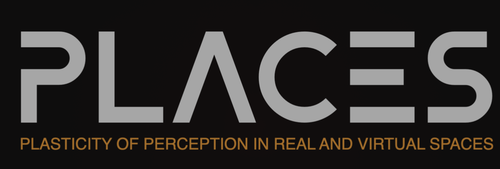- Home
- Research Interests Apri sottomenù
- Publications
- People
-
Projects
Apri sottomenù
- Progetto PNC - Fit4MedRob - Interfacce Neurorobotiche Ibride per il Controllo e il Recupero della Funzionalità Motoria e Verbale (NeuroRobCoRe)
- Progetto PNC - Fit4MedRob - Sistema innovativo per l'Analisi del Movimento e il Monitoraggio in Tempo Reale del Tremore (SMART-tremor)
- PRIN2022 - MulWalk
- Partenariato Esteso, funded by PNRR - Mnesys
- MSCA Staff Exchanges - PLACES
- PRIN 2020
- FETPROACT-2019 MAIA
- HumaneAINet
- Ricerca Finalizzata 2019 - GR-2019-12369242
- PRIN2017 - PACE
- H2020-MSCA-RISE-2016 - Platypus
- Agenda
MSCA Staff Exchanges - PLACES

Plasticity of perception in real and virtual spaces
The first aim of PLACES is to understand how sensorimotor interactions in virtual environments shape perceptual space and how this interacts with virtual (VS) and real (RS) space. Secondly, deep and improved knowledge of perceptual mechanisms is essential for the future development of VR as a key digital technology for Europe. To work for the people, VR and XR need to be effective, comfortable, transparent and fair. These aims can only be reached by understanding and accounting for perception in a human-centric manner. Based on these premises, the highly interdisciplinary consortium of PLACES pursues five key objectives:
1. Use cutting-edge VR technology to advance scientific knowledge of the mechanisms of sensorimotor perception and plasticity;
2. Use our understanding about spatial perception, gaze control and sensorimotor plasticity to advance VR technology and enhance VR applicability;
3. Pedict action intentions of users in VR and employ these predictions in advanced user interfaces;
4. Understand how long-term usage of VR interacts with perceptual and sensorimotor states in real space and in virtual space; and
5. Translate research findings into applied fields in vision aids and social telepresence.
Reaching these objectives will put the EU on the map as a leader in perception research and its application in VR. PLACES aims for new frontiers in perception science and its applications, and for a significant impact on the people of the EU.